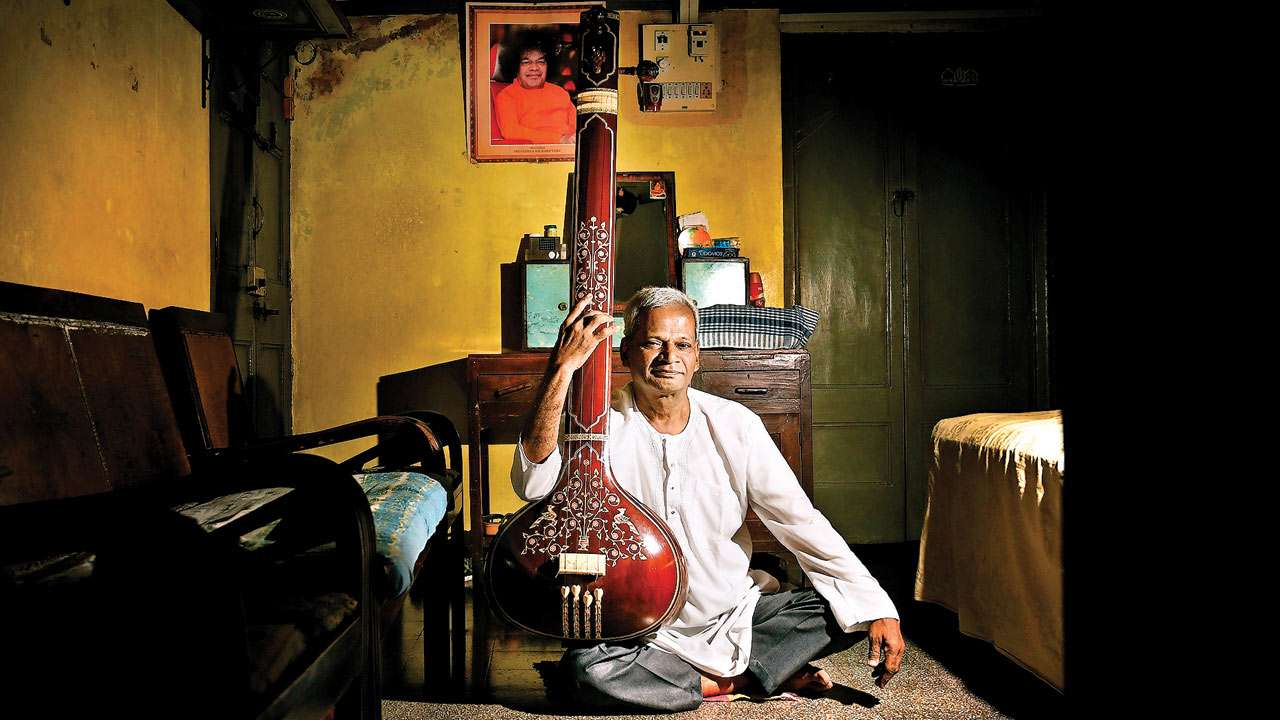
Ustad Amjad Ali Khan, Begum Parveen Sultana, Mukul Shivputra, Ajoy Chakraborty, Ajay Pohankar, Aruna Sairam, Malini Rajurkar, Aslam Khan, Birju Maharaj, Hariprasad Chaurasia, T M Krishna, N Rajam, TN Krishna, Ronu Muzumdar, Nityanand Haldipur, Girija Devi, Ulhas Kashalkar, Rashid Khan, Jayteerth Mevundi, Vyankatesh Kumar, Rajan-Sajan Mishra, Kala Ramnath, Zakir Hussain, Ghulam Mustafa Khan, Rajshekhar Mansoor, Shubha Mudgal, Dhruva Ghosh, Nayan Ghosh, PK Datar, Bharat Balavalli, Rahul Deshpande, Chhanulal Mishra, Anandiyo Chatterjee, Gundecha brothers, Sudha Raghunathan, Devki Pandit and Shankar Mahadevan. What do these big names from music have in common? They have all had tanpura accompaniment by almost-septuagenarian Dadar-resident Jayant Naidu. The maestro folds his hands humbly: “That so many stalwarts insist on a small man like me is a big honour and privilege,” when he meet at his humble Central Mumbai residence.
There are two kinds of acoustic tanpuras: the heavier Tanjore tambura, with a wooden resonator with characteristically different sound and the Miraj tanpura with a dried, specially cured gourd for a resonator.
Four strings stretched over the instrument staff are plucked at regular intervals to help figure the pitch of the first note of the main octave. About the overall musical ambience it creates, Carnatic maestro TM Krishna says, “In the sublime resonance of its four strings lies the matrix of Indian classical music,” in A Southern Music: The Karnatik Story (2014).
Depite the arrival of mechanical alternatives like the electronic tanpura or even tanpura apps on phone there is nothing quite such as the acoustic version insists Naidu. He should know. He’s given tanpura support to who’s who for over four decades.
Born in a working class family in 1950 his early influences of music came from his father, a deeply religious man who was head-mechanic at General Motors in the British era. “He’d sing compositions that he had learnt as child after his evening puja that we all had to attend if we wanted dinner,” he reminisces. But that attraction for music never translated into formal training. “We barely had enough to eat twice a day. Even if it cost a just a couple of annas, it was a luxury we could ill-afford.”
After muncipal school and an incomplete college education he tried his hands at several odd jobs before finding work at the Bank of Maharashtra – a job he pursued for nearly three decades.
But how did the tanpura come into his life? “I was around 20 when I was drawn to the bhajan baithaks at my neighbour’s. Soon I was going all over the neighbourhood to attend them. A doctor NA Patkar organised a baithak every Sunday and I’d attend. He once told me to accompany him on the tanpura saying it is very easy,” he recollects. What began on a lark became his undying passion. “I learnt the basics of singing and some tabla too to familiarise with the techniques.”
Apart from the tanpura’s drone, which he loves, he said the advantage of proximity to eminent maestros and artistes kept him going. “There’s so much music I’ve imbibed by just being with them.” Devoted to music, he stayed single and lives with his sister who also remained single. “This is life-long sadhana (dedication).”
And this dedication often goes both unsung and unrenumerated. Even while we were at Naidu’s house, a popular musician called him for accompaniment. Even when he quoted a modest `2,600 for the entire concert, the musician kept asking him reduced it to `2,000. “Some artistes have to be chased for renumeration,” he laments and adds, “I don’t ask a single paisa for a charity performance for good causes but when you see artistes whose own remuneration is in lakhs of rupees trying to cut yours, it hurts. Thankfully, I have a really modest lifestyle and can make do with very little.”
He says this has ensured there are hardly a handful full-time tanpuriyas. “Most artistes get their students to play the tanpura since they won’t have to pay.”
Hope this changes. Soon...